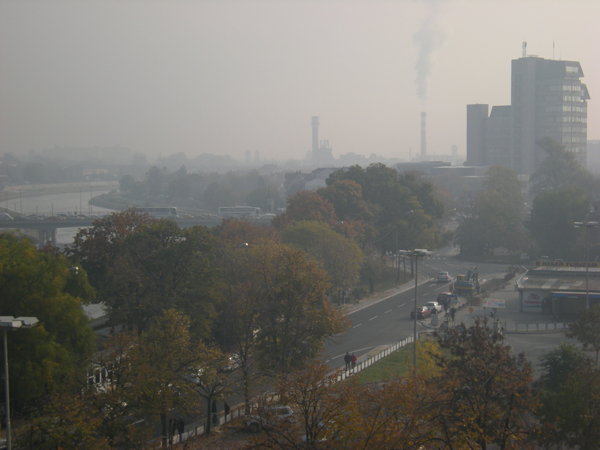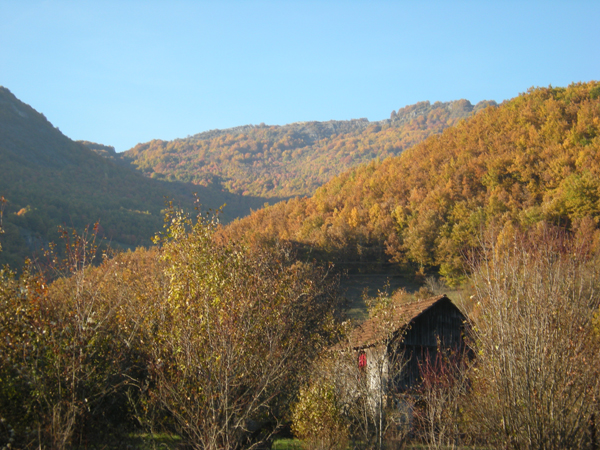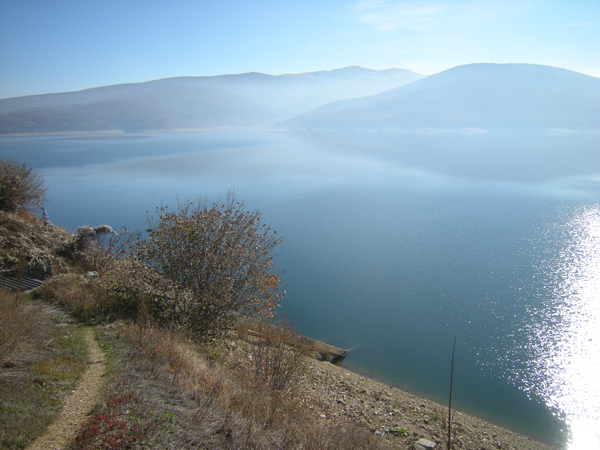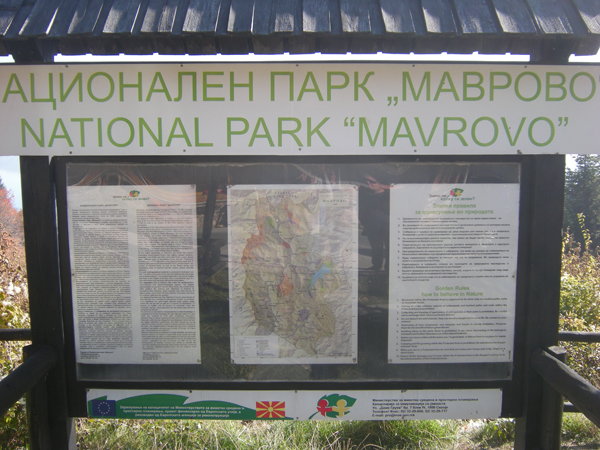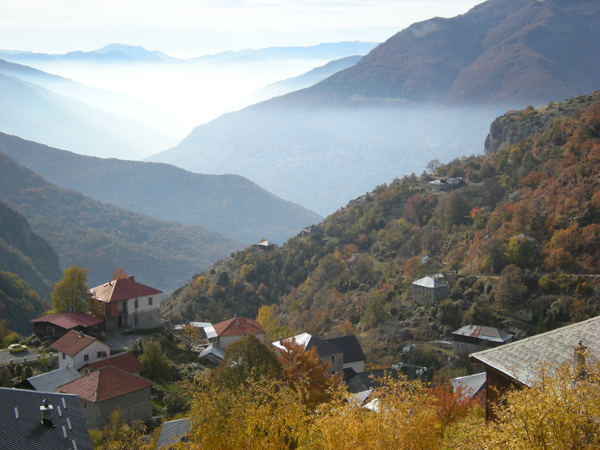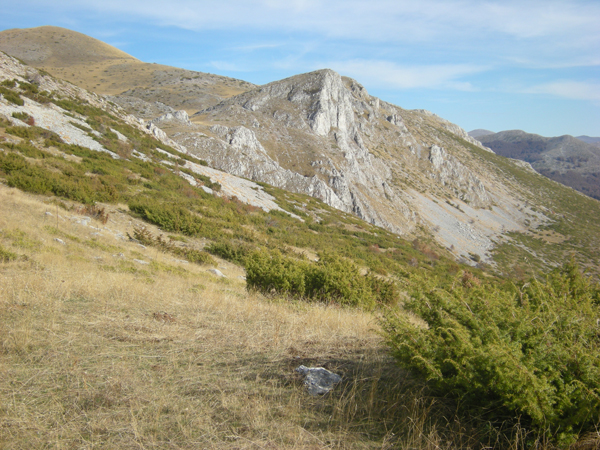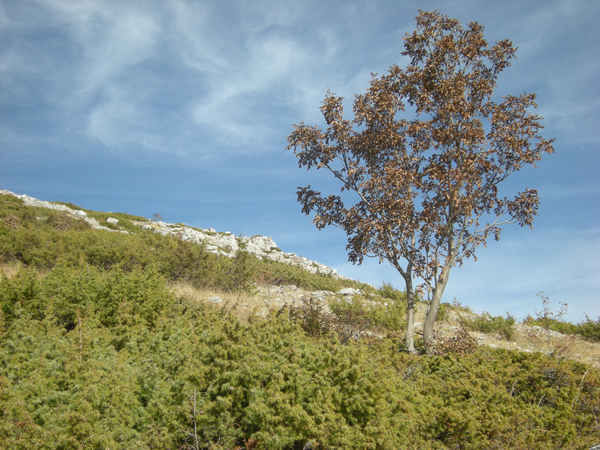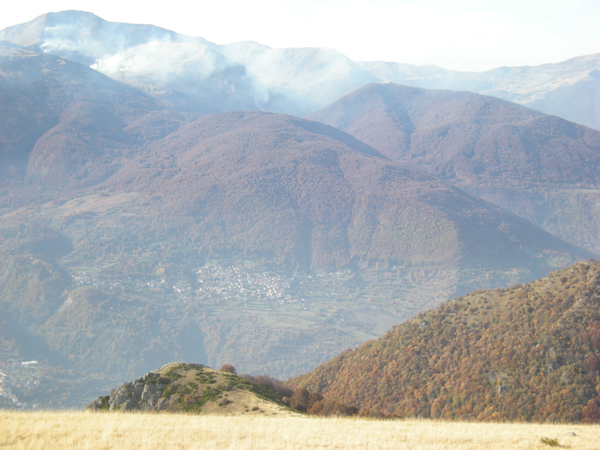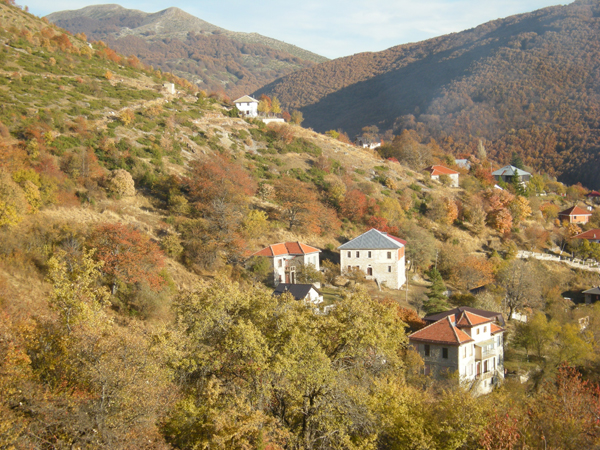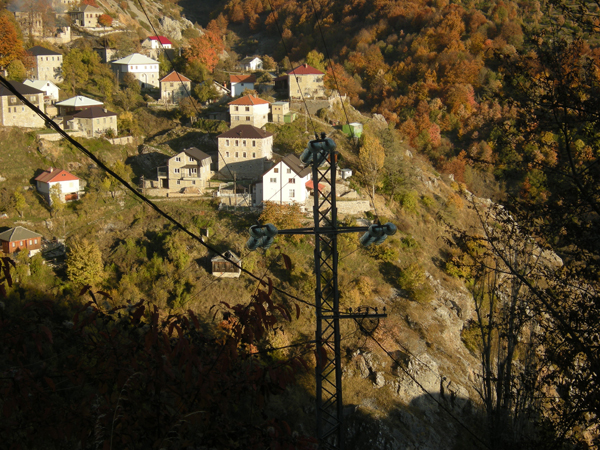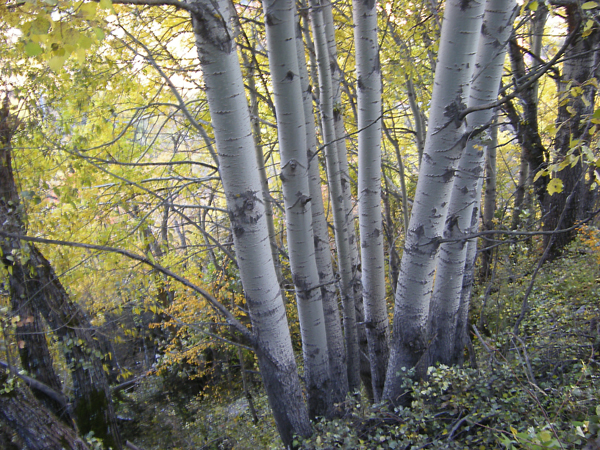5 November 2011
About three-quarters of households in Macedonia are heated with firewood. Wood is estimated provide 30% of residential energy, and around 10% of the total energy consumption of the country. In a still-developing country, almost 40% of which is covered by forests, perhaps this shouldn’t come as a big surprise. In rural areas, where at least half of Macedonians live, wood is burned in traditional wood stoves and fireplaces.
At a high-level conference on climate change and “low emissions development” in Skopje, attended by the Minister of Economy, the Director of the Department of Energy within that ministry, and a host of energy experts and scientists from the Macedonian Academy of Sciences and Arts, an American participant from USAID gave his opinion that heating with wood was old-fashioned, inefficient, and unhealthy. His view was that Macedonia should develop a national distribution system for natural gas to replace this old-fashioned dependence on wood fuel. Despite the somewhat intimidating high-level audience, I found myself responding to his comment by confessing that I partially heat my own house, in a suburb of Washington, D.C., with wood, which I burn in a high-efficiency woodstove. I explained that modern woodstoves, many certified by the U.S. Environmental Protection Agency, burn wood very efficiently and cleanly because they are airtight and allow careful control of the flow of air to the burning wood, and that they are completely smokeless except just as they are being lit. I acknowledged seeing the smoke haze hanging over Skopje on these cold mornings, but ventured my guess that the smoke was due mainly to the burning of agricultural residues in the fields surrounding the city, not to burning firewood. The USAID representative listened thoughtfully, as if this was the first time he had heard of high-efficiency woodstoves, or heard wood-burning defended as a clean, efficient, modern technology, and not backward and outmoded.
I didn’t confess that throughout my graduate school days, the old Datsun truck I drove had a bumper sticker that said: “Split Wood, Not Atoms.” That was quite rebellious for the son of a Ph.D. nuclear physicist father, whose career was focused on nuclear reactors. Those were the days of The Monkey Wrench Gang, Earth First, Small Is Beautiful, Ecotopia, and Mother Earth News. But even then it was clear that burning wood was not at all old-fashioned or backward, but rather a step toward a renewable energy future. How sad and discouraging that, decades later, an American is suggesting to Macedonians that they “develop” by giving up wood burning!
During a break in the conference, a couple of the Macedonian energy experts descended on me to ask incredulous questions: Do you really mean that these stoves burn without smoking? Would you say that if forests are managed sustainably, wood should be considered a renewable energy resource? Yes, and yes! These men were members of the National Climate Change Committee, and contributors to Macedonia’s Second National Report to the United Nations Convention on Climate Change. My comments seemed to open up their minds to the idea that maybe, for Macedonia, wood would be a viable, modern, renewable energy alternative. Especially an alternative to natural gas for rural, residential space heating. For most rural families, a shift to either a high-efficiency woodstove or a natural gas furnace would require an investment in new technology. But for woodstoves, the fuel is growing in the nearby forests – there is local “energy security.” Natural gas, on the other hand, would have to be imported via pipelines from producing countries, such as Russia. In that case, so much for “energy security” and energy independence. Not to mention that, from a low-carbon emissions viewpoint, wood fuel is “carbon neutral” if produced sustainably, whereas natural gas, although it produces less carbon dioxide than burning coal, is a non-renewable fossil fuel, adding ancient carbon back into the atmosphere and contributing to global warming.
Early on a frosty Saturday morning we left Skopje and drove up the valley of the Vardar River, which rises in the mountains of the Mavrovo National Park about 100 kilometers to the west. We passed through the farming town of Tetovo, the valley still enveloped in smoke haze from the field burning. In Gostivar we turned off the main highway and started climbing, soon breaking above the valley’s inversion layer that was holding the smoke, to sunshine and bright blue sky.
We drove through a forest of beech, poplar, and oak, crossed over a ridge, and stopped at Mavrovo Village, a small cluster of houses and shops overlooking Mavrovo Reservoir, created by a dam whose construction began in 1948, the same year the area was designated a national park. At that time Macedonia was one of the six socialist republics of the Federal People’s Republic of Yugoslavia, and the socialist vision of development of the time didn’t encompass the idea that hydropower and nature protection might be incompatible. Like Hetch Hetchy Dam in Yosemite National Park, approved in 1913 and completed in 1923, the Mavrovo Dam is a monument to the attitude that nature exists only to serve human material ends.
Macedonia is mountainous and rich in hydropower potential – although not at all comparable to that of its western neighbor Albania, which has much greater hydro potential. Hydropower already provides 10% of Macedonia’s electricity, and hydropower promoters are proposing to double that amount in the next 20 years.
After coffee in the warm sun on the terrace of a Mavrovo Village café, we drove down and across the dam, and around the lake to a small town and cluster of hotels at the base of the Mavrovo Ski Resort. In the largest hotel, Hotel Bistra, we asked for information about hiking in the park, and by good fortune one of the employees spoke English and had a real knowledge of the area. He recommended hiking in an area above the forest level, where we could see where we were going and navigate visually. The park management is working on marking trails for hiking, and maybe by next year they will have a map, he said, but right now you really need to know where you are going, or need a local guide, if you want to hike in the forested parts of the park.
Because we had already been talking about going to the village of Galičnik, which sits just at the top of the forest belt, we decided to start there. Our driver, Nicola, knew the place because of personal connections. His grandmother and grandfather had moved from Galičnik to Skopje, he said. Also, his girlfriend’s cousin ran a hotel there, where he had worked for a few days last summer as a waiter and bartender during the “Galičnik Wedding,” a famous celebration of Macedonian traditional culture, dance, and music that happens every July, and draws thousands of visitors to the small traditional village, perched at the top of a steep mountain valley.
My Lonely Planet travel guide said of Galičnik: “Galičnik’s villagers were once wealthy, but Tito’s nationalization program ended their shepherding livelihood and they migrated to Skopje or abroad. Nevertheless their traditional homes are preserved by descendants for summer holidays. The road’s snowed in by November, meaning that after that, if you’re in, you’re in.” Apparently, on this balmy weekend of November 5th, we were pushing our luck.
As we hiked up from Galičnik, we passed above the “treeline” of beech forest into a zone of scattered, low-growing junipers and grass. The needles and berries of this juniper looked familiar – like the common juniper, Juniperus communis, that I have seen so often in the Rocky Mountains, the Boundary Waters of northern Minnesota, and other places. Later, on a U.S. Forest Service plant website, I found that “Common juniper is possibly the most widely distributed tree in the world. This circumboreal species occurs across North America, Europe, northern Asia and Japan.” Here, it appeared to form islands of unpalatable vegetation in a zone that is heavily grazed in summer by sheep. The “look” of its growth pattern and distribution reminded me of other situations I’ve seen where heavy grazing has led to the encroachment and dominance of unpalatable vegetation – tussock grasses in the Ngorongoro Crater highlands in Tanzania, or “bush encroachment” in the highlands of Namibia, for example.
I put “treeline” in quotation marks above, because my “gut-level” feeling was that this was not a natural treeline, like I am used to seeing in the Rocky Mountains or Sierra Nevada of North America, but one caused by human activities. One hint of this was the fact that, above the “treeline” of beech forests that stopped at about the elevation of Galičnik, there were large “islands” of prickly, resinous common juniper, and in the middle of many of them, well protected from grazing sheep, were young trees. This suggested that grazing was suppressing regeneration and keeping the forest, which would be the natural potential vegetation here, from coming back. “Treeline” above Galičnik may be an artifact of human activities, namely grazing.
Looking out to far ridges across deep, forested valleys, fires were burning in the mountain grasslands at about the same elevation where we were walking. Burning pastures in the fall is a tradition throughout this region, and obviously these fires in the mountain grasslands were deliberately set. Perhaps part of the reason is to control the spread of common juniper, which is susceptible to fire, because its foliage is resinous and very flammable. Human influences may thus limit the growth of forests, and also limit common juniper, which would otherwise dominate these alpine pastures. And all of this traditional ecological management was taking place within a national park! For me, an avid student of all of the weird and interesting ways humans interact with nature, this was totally fascinating.
This train of thought – that all of this traditional ecological management is taking place in a national park – reminded me that Mavrovo National Park is something different than the U.S. model of a national park. Mavrovo was designated as a national park in 1948 by Yugoslavia, in a long-inhabited mountain area, and construction of the Mavrovo hydropower dam began in the same year. Today, even after widespread rural depopulation, about 6,000 people live in more than 40 villages, like Galičnik, scattered through the park. According to a recent assessment of the park management plan, sales of firewood and timber from the park’s forests have been its main source of revenue. Ecotourism seems to be an option for bringing visitors and revenues to the park, but as we found, the basic infrastructure for hiking and other kinds of ecotourism do not exist and are just beginning to be developed.
The latest episode in hydropower development and Mavrovo National Park is Lukovo Pole. “Lukovo Pole,” the Lukovo Valley, is a remote area of the national park on the border between Macedonia and Kosovo. A proposed World Bank project, the Lukovo Pole Water Regulation and Renewable Energy Project, is under preparation. It would involve extensive hydrological engineering in this high-altitude valley, including construction of a large dam, a 20 kilometer-long water diversion channel to transfer water from the Mt. Korab watershed to the reservoir, and a small, 5 MW hydropower project on the Crn Kamen River downstream of the dam. The loan is scheduled for potential approval in 2012. According to the World Bank’s Project Information Document, “The project area lies in a sub-alpine landscape of considerable natural beauty with diverse fauna and flora and a relatively unspoiled landscape. ELEM [Elektrani Na Makedonija, the state-owned power company] is hiring consultants to prepare Environmental and Social Impact Assessments (ESIAs). Since it is located in a national park, the World Bank Operational Policy (OP 4.04) is triggered. The Terms of Reference for the planned ESIA includes specific attention to biodiversity and protection of rare and endangered species.” (World Bank 2011) This project is strongly opposed by some Macedonian environmental NGOs, who argue that it is in a wild, untouched area in a strictly protected zone of the park, with some of the last virgin forests in the country, and violates national environmental laws.
It seems hardly believable that the World Bank would even consider such a project in 2011. Either some World Bankers are still living in the world of 1913 America, when Hetch Hetchy was approved, or the 1948 Socialist Republic of Macedonia, when construction of the Mavrovo Dam began in the national park, or maybe they just wanted to keep the project out of the hands of the Chinese, who would surely not bother with an Environmental Impact Assessment. If the latter, that would be very clever environmental globalism! We’ll wait and see what the EIA recommends. Hopefully it will kill the Lukovo Pole project.
Related Links:
- EPA Woodstove Certification
- Galičnik Wedding Festival
- Macedonian Folk Dances
- Common Juniper, Juniperus communis
- Spatial and Management Plan of Mavrovo Nation Park, Macedonia: An Initial Assessment (2007)
- Lukovo Pole Water Regulation and Renewable Energy Project: Project Information Document (PID), Concept Stage. 14 July 2011.



